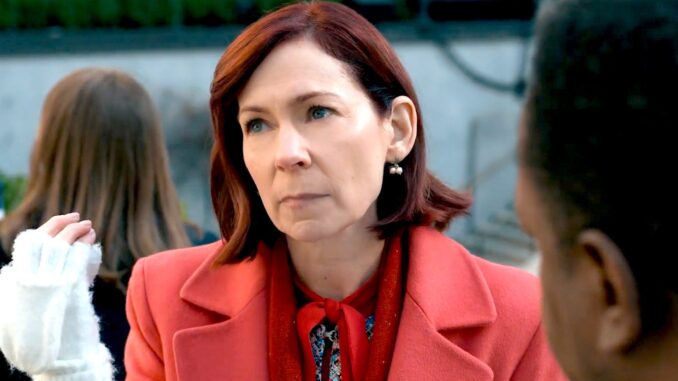
The Kaleidoscopic Charm: How Elsbeth Breaks the Mold of Traditional Crime Dramas with Humor and Heart
The landscape of modern crime dramas often feels like a symphony of shadows and morally ambiguous protagonists, a relentless march through grit, cynicism, and the grim realities of human depravity. From the chilling forensic details of CSI to the intricate legal battles of Law & Order, or the tortured psyches of detectives in Scandi-noir, the genre has largely settled into a familiar, often somber, rhythm. Then, like a brightly feathered bird landing amidst a flock of crows, arrived Elsbeth, a show that not only defies these conventions but joyously dances around them, injecting a much-needed dose of humor and genuine heart into a world too often steeped in darkness.
Elsbeth‘s most audacious structural innovation is its complete inversion of the traditional “whodunit.” Eschewing the agonizing suspense of an unknown perpetrator, the show embraces the “howcatchem” format. Each episode opens by revealing the killer and their meticulously planned crime in the first few minutes. This immediate transparency might seem to defang the mystery, yet it cleverly shifts the narrative focus from who did it to how Elsbeth Tascioni, the show’s titular and utterly unique protagonist, will uncover the truth. The tension isn’t derived from the reveal of the culprit, but from the delightful intellectual puzzle of watching Elsbeth’s wonderfully eccentric mind piece together the seemingly disparate clues that everyone else misses. This approach fundamentally breaks the mold of procedural storytelling, allowing for a more character-driven and less plot-ensnared experience. We aren’t just solving a crime; we’re witnessing a masterclass in observation, delivered with an unparalleled charm.
While the “howcatchem” lays the groundwork for its distinctiveness, it is Elsbeth herself who truly embodies the show’s joyful departure through an abundance of humor. Played with captivating brilliance by Carrie Preston, Elsbeth Tascioni is a character unlike any other detective on television. Her humor isn’t derived from sarcastic one-liners or world-weary cynicism; it’s organic, stemming from her disarming literalism, her social awkwardness, and her utterly unconventional approach to investigation. She’s a walking, talking anachronism in a world of sleek professionals, adorned in a vibrant, often mismatched, sartorial splendor that belies her sharp intellect. Her questions, seemingly tangential or ridiculously specific, often catch suspects off guard, revealing truths through their bewildered reactions.
Illustrative examples of her humor are plentiful: she might dissect a witness’s choice of pastry or obsess over the mechanics of an unlikely prop, all while her mind is quietly, relentlessly connecting dots invisible to others. Her conversations are a delightful labyrinth of serpentine digressions that somehow always lead back to the central truth. She’s a bull in a china shop of polite society, yet her perceived lack of filter often becomes her greatest asset, allowing her to cut through pretense with an almost childlike directness. This unique brand of humor serves not only as comedic relief but as a fundamental tool in her investigative arsenal, disarming both suspects and audiences alike. It’s a humor born of personality, not punchlines, making it feel authentic and deeply endearing.
Beyond the structural innovation and the comedic genius, Elsbeth distinguishes itself with an undeniable and often palpable heart. In a genre frequently accused of exploiting tragedy, Elsbeth consistently maintains an undercurrent of genuine empathy and an almost unflappable optimism. Elsbeth, for all her quirks, is driven by a profound sense of justice and a deep-seated desire to bring peace to victims. Her interactions with the supporting cast, particularly her reluctant partner Officer Kaya Blanke, evolve from initial exasperation to a touching bond of mutual respect and affection. Kaya, initially baffled by Elsbeth’s methods, comes to recognize the brilliance and inherent goodness beneath the eccentricities.
This “heart” extends to the show’s overall tone. Even when dealing with murder, Elsbeth never feels truly bleak. It champions intellect and kindness over brutality and cynicism. The show finds joy in the pursuit of truth, in the small moments of human connection, and in Elsbeth’s unwavering belief that every puzzle has a solution. It’s a show that trusts its audience to appreciate intelligence and warmth, rather than relying on shock value or gratuitous violence. The vibrant, almost whimsical aesthetic, the bright colors, and the often sunny New York City backdrop further underscore this optimistic spirit, providing a stark contrast to the muted palettes and brooding atmospheres typical of the genre.
In conclusion, Elsbeth is a triumph of creative subversion. By audaciously flipping the traditional crime procedural on its head with the “howcatchem” format, it immediately sets itself apart. Yet, its true genius lies in its titular character, Elsbeth Tascioni, who imbues every scene with a singular brand of humor born of genuine eccentricity and a disarming sincerity. This humor, paired with an undeniable undercurrent of heart – manifested in Elsbeth’s deep empathy, her evolving relationships, and the show’s pervasive optimism – creates a television experience that is both intellectually stimulating and emotionally satisfying. Elsbeth doesn’t just break the mold; it shatters it into a million sparkling pieces, proving that even in the darkest corners of crime, there’s always room for a little light, a lot of laughter, and a genuinely caring spirit.
